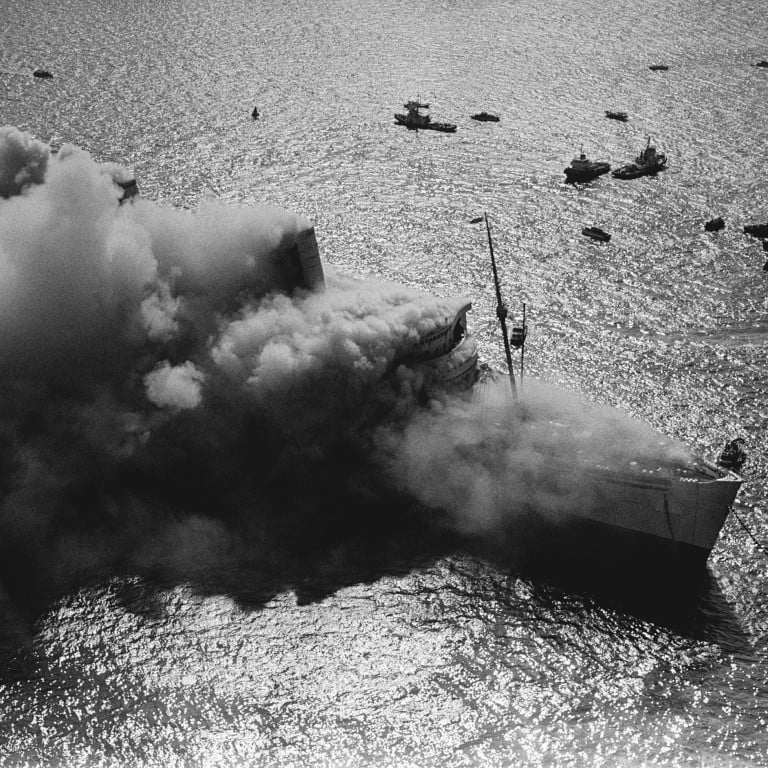
On this day | Hundreds rescued as inferno engulfs former luxury liner Queen Elizabeth in Hong Kong’s Victoria Harbour in 1972 — from the SCMP archive
- More than 50 years after the former ocean liner was gutted by fire while being converted into the floating Seawise University, we look at how the Post covered the blaze on January 9, 1972
- Wreck of the vessel in Victoria Harbour was later used as a film location for the James Bond film The Man with the Golden Gun
By Joe Veiga, TS. Koo, Reggie Rathour, Kenneth Ko, JP Prettejohn, KC Tsang, Leslie Worsfold, TS Yip and Tommy Lewis
Five days before her sea trials and after HK$30 million was spent in refitting her, the 83,000-ton queen of the seas, the Seawise University, was on Sunday [January 9] swept by fire from stem to stern.
Early this morning after the inferno had raged for 12 hours, the aft promenade deck on the port side was reported to have collapsed to the main deck level.
The fire, which began shortly before noon on Sunday, sped through most of the ship’s 11 decks, destroying state rooms, public rooms. kitchens and restaurants.
A huge pall of smoke hung over Hong Kong’s western skyline throughout the afternoon and evening. Late last night, as the blaze held its grip, the ship glowed like a huge lantern.

Firemen say the whole of the port side is becoming red hot and there appeared to be oil on the fire below the main deck.
Although no deaths have been reported 10 people were injured. Two of them are in hospital.
More would probably have been hurt were it not for the quick rescue of more than 300 people, including children and guests who had gone to the shop to attend a buffet lunch.
Many jumped into the sea and others slithered down ropes to be picked up by a host of small craft, including pleasure boats, which raced to the scene.
As the blaze raged there were a number of explosions which could have been caused by oxyacetylene cylinders catching fire, one sending a giant smoke-ring into the air.
And in no time it was like an inferno
By evening the ship was listing 17 degrees to starboard and fears were expressed that if she listed further she might capsize at low tide this morning. She later corrected to a 15-degree list.
The Director of Marine, Mr K. Milburn, described the fire as one of the biggest in maritime history, and likened it to the sinking of Normandy in New York harbour in 1942.
He said the fire started at the stern of B deck, spread very quickly “and in no time it was like an inferno”.
Firemen on three fireboats fought the flames from the port side as smoke billowed from the superstructure and out of the portholes.
Some of the firemen wearing breathing apparatus battled their way to the engine room to see if anyone was trapped. There was nobody there.
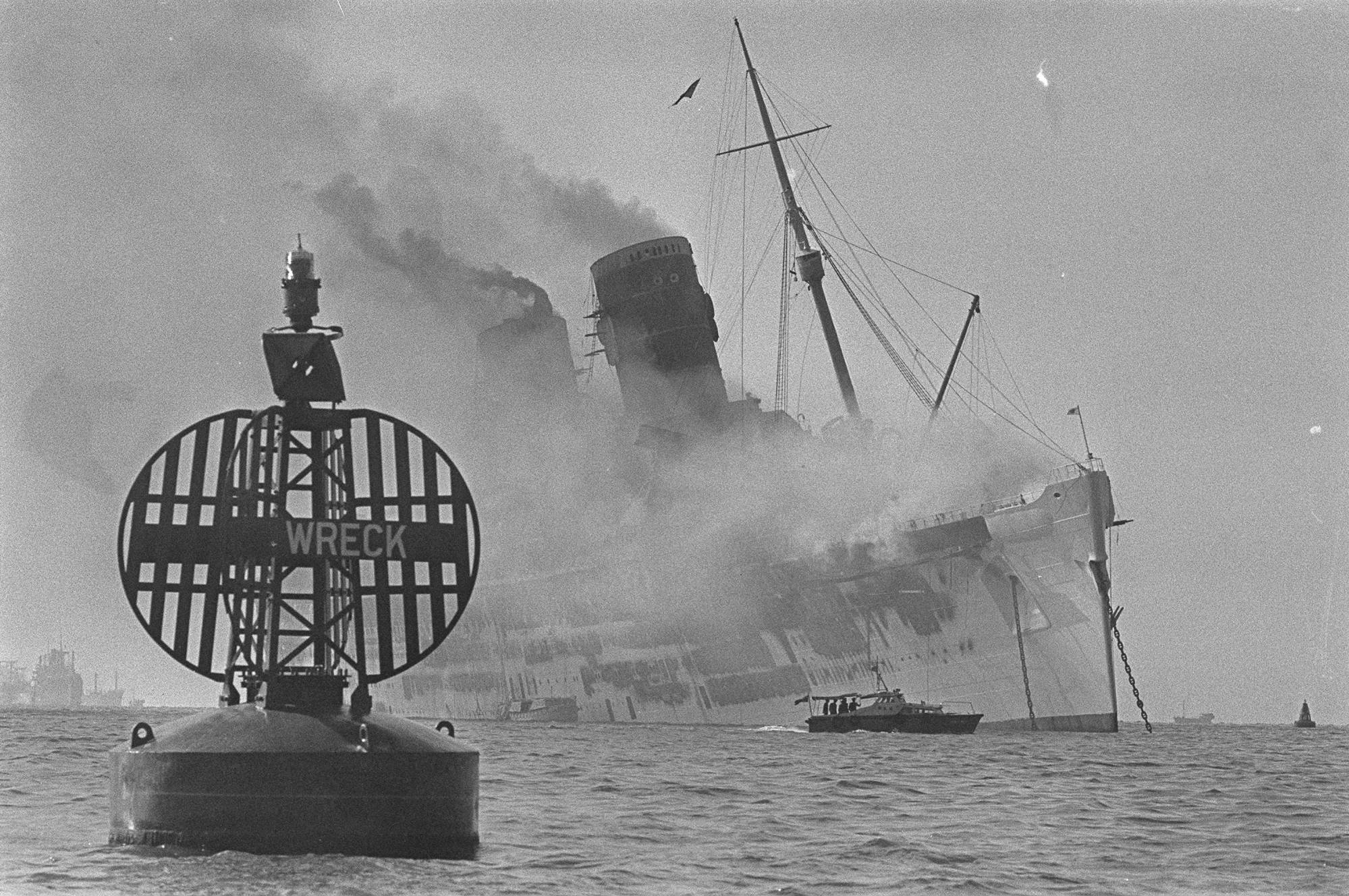
It was however, a close shave for quite a number of crew members and workmen who were in the bowels of the vessel. They did not know that there was a fire but sensed that something was wrong when the electric lights went out at 12.20pm.
They groped their way in pitch darkness to an upper deck and then, discovering isolated pockets of flames, used fire extinguishers to put them out. But they were forced to abandon further efforts by smoke and heat.
The fireboats, dwarfed by the huge liner, were reinforced by a fire engine rushed close to the liner on board a double-deck vehicular ferry of the Hongkong and Yaumati Ferry Company in what was believed to be the first operation of its kind. Additional firemen were also on the ferry.
Another ferry from the company stood by to pick up any people from the sea. Scores of Marine Police launches were also there as well as the Royal Navy’s patrol craft Yarnton. Five divers were on standby duty.
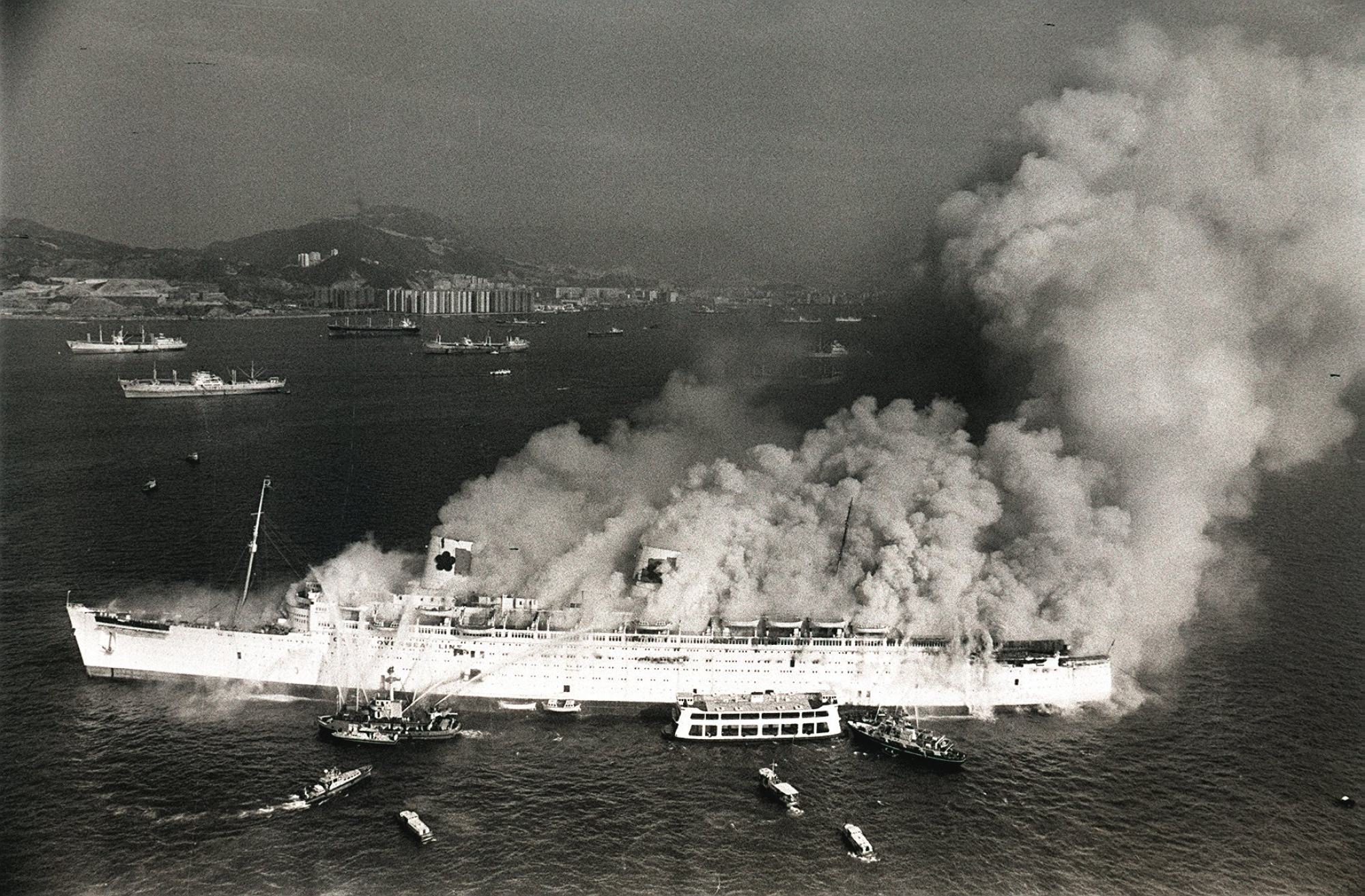
Divers from the Fire Services Department boarding the wrecked Seawise University cruise liner after the severe fire to make preliminary investigation.
Helicopters from the Royal Air Force hovered at a low altitude, ready to give any assistance needed.
One pleasure boat picked up 25 people from the sea while a police launch rescued another 22.
Loud-hailers and radios were used to warn all vessels not to approach within 800 yards of Seawise.
At one time it was intended to beach her but this plan was abandoned.
At 4.40pm it was decided that no more water would be pumped into the ship as this might increase the list and endanger her stability. But an hour later the hoses went into action again.

Ambulance stood by on shore to take the injured to hospital. Only two of them appeared to be seriously hurt.
Mr Ping Lien-to, of the shipping company’s repair division, was wheeled into Queen Elizabeth Hospital with back injuries sustained in a high fall from the ship as he was sliding down a rope. Another man had severe stomach injuries.
Up to early this morning it could not be established whether anyone who was on the shop was missing. Police officers at the scene said that “in a fire like this nothing can be certain at this stage”.
Over three hundred saved by 2 launches
At the height of the fire, two launches in the nearby area, Cynthia and Fung Wong, raced to the blazing ship and rescued more than 300 screaming people standing on the vessel’s bow.
The master of Cynthia, Mr Cheung Wah-chai, said when his launch reached the Seawise, his crew members threw ropes on to the vessel and the people slide down the ropes onto his launch.
“Some of them who failed to get the ropes, climbed down from the ship’s anchor chain onto the buoy where they were picked up by passing launches,” he said.
Mr Cheung said that a few fell into the sea when they lost their grip on the heavy chain but were immediately picked up. None of them suffered any injuries but just got a ducking.
One of the rescued said about 1,200 workers boarded the ship at 8am to give the finishing touches to the giant vessel.
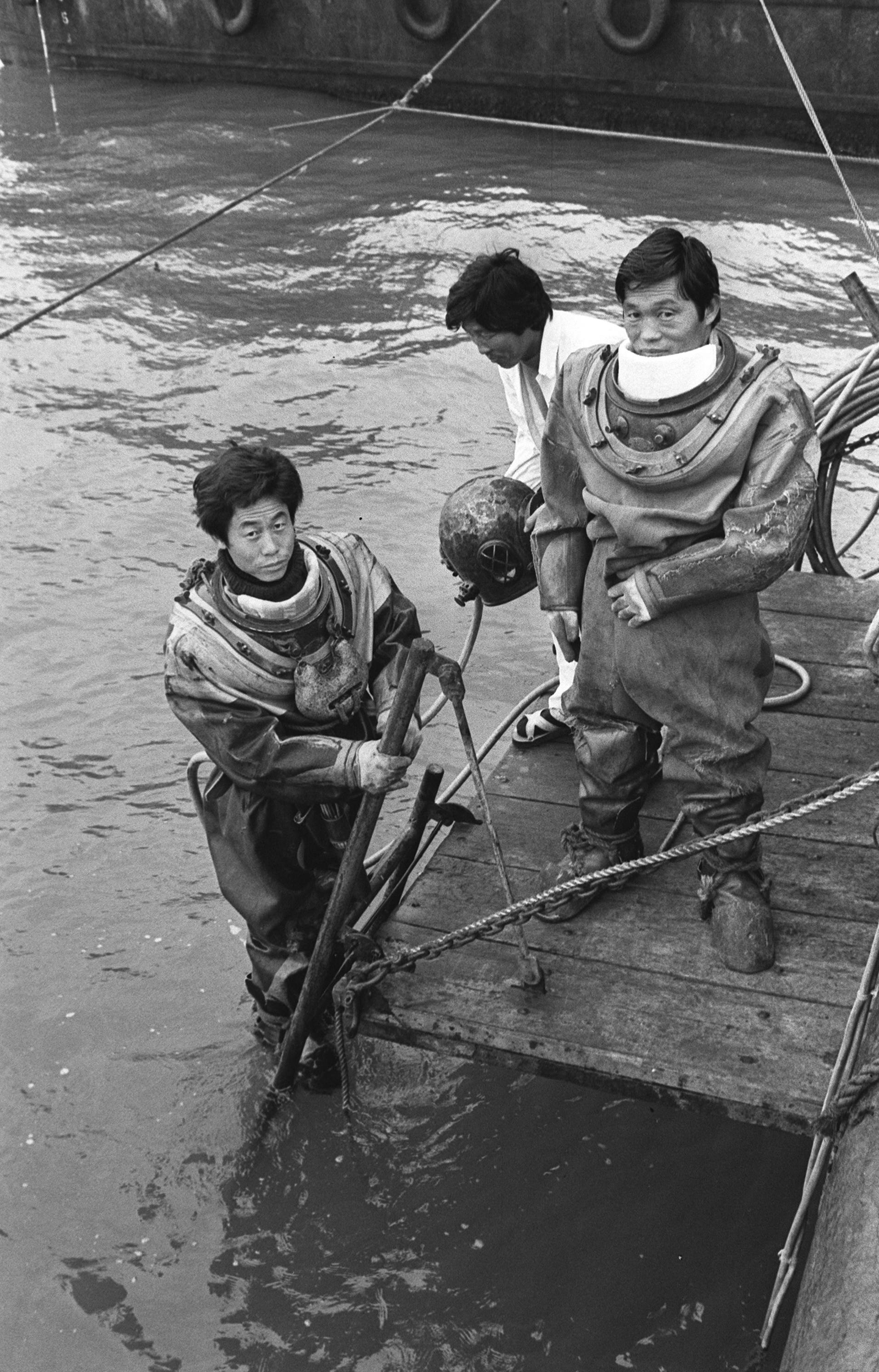
He said many of the works had stopped work at 11am and were taken shore for lunch.
According to him the fire is believed to have broken out on A Deck shortly after 11.10am. Several launches from C.Y. Tung Group shipyard in Cheung Sha Wan raced to the blazing shop where they picked up workers.
Shortly after news of the fire broke over the radio, hundreds of relatives of the workers gathered outside the gates of the shipyard.
They were assured by senior officials that every single worker on board the Seawise was accounted for.
The officials told the crowd that workers had been taken ashore and landed on various parts of the Colony. The group then dispersed.
A crew member engaged as a fireman on board the ship, Mr Li Kun-hung, said he saw smoke on A deck at about 11.40am and electricity supply was out shortly afterwards.
“I heard several explosion sounds and saw smoke emitting in all directions. I left the shop with a group of other workers.”
Another fireman, Mr Yu Kwok-ming, was picked up from the sea after he dived into the water unable to bear the increasing heat on the vessel.
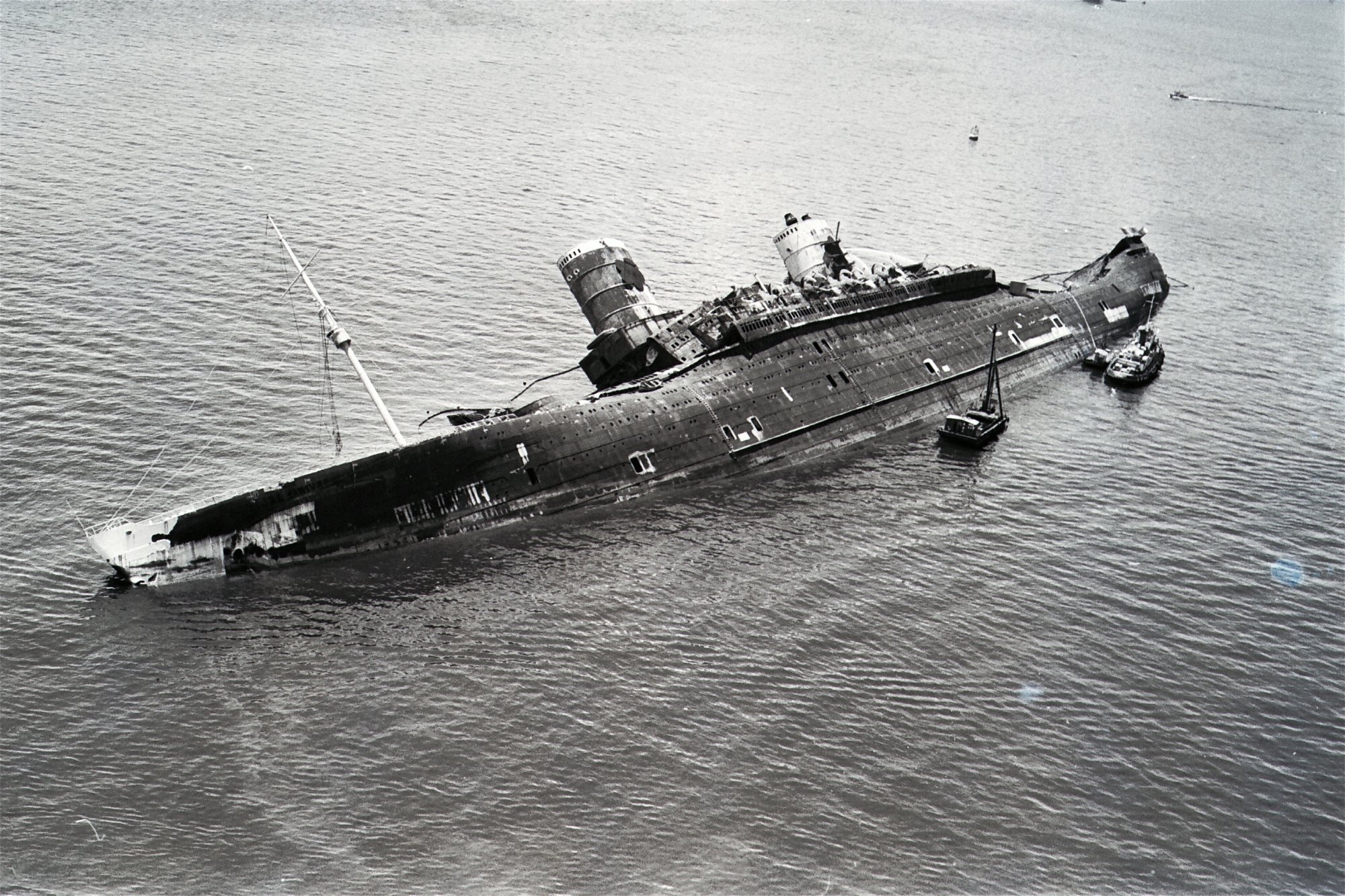
According to Mr Yu Kwok-ming there were as many as 2,000 people on board at the time of the fire as some of the workers brought relatives to the ship for a visit. Many of the visitors were children.
He said he remained on board the ship, but was forced to jump into the sea after he heard several explosions.
Another rescued worker, 20-year-old Kung Shiu-woo, who worked in the ship’s restaurant said he believed the fire had started on either the A or B Deck.
“The people on board were not frightened at first because there were only small scattered fires.
“When we saw. the captain preparing to leave the ship with documents, we knew the fire was serious,” he said.
He said he then asked permission to leave the ship and was told to do so.
He and several other folks who left together, were picked up by a Marine police launch.
“While we were on the police launch we heard the sound of one or two explosions and I saw the ship was logged with smoke.
“I turned back and saw people crowding on the ship’s stern and bow and making their escape by climbing down ropes on to the lighters.”
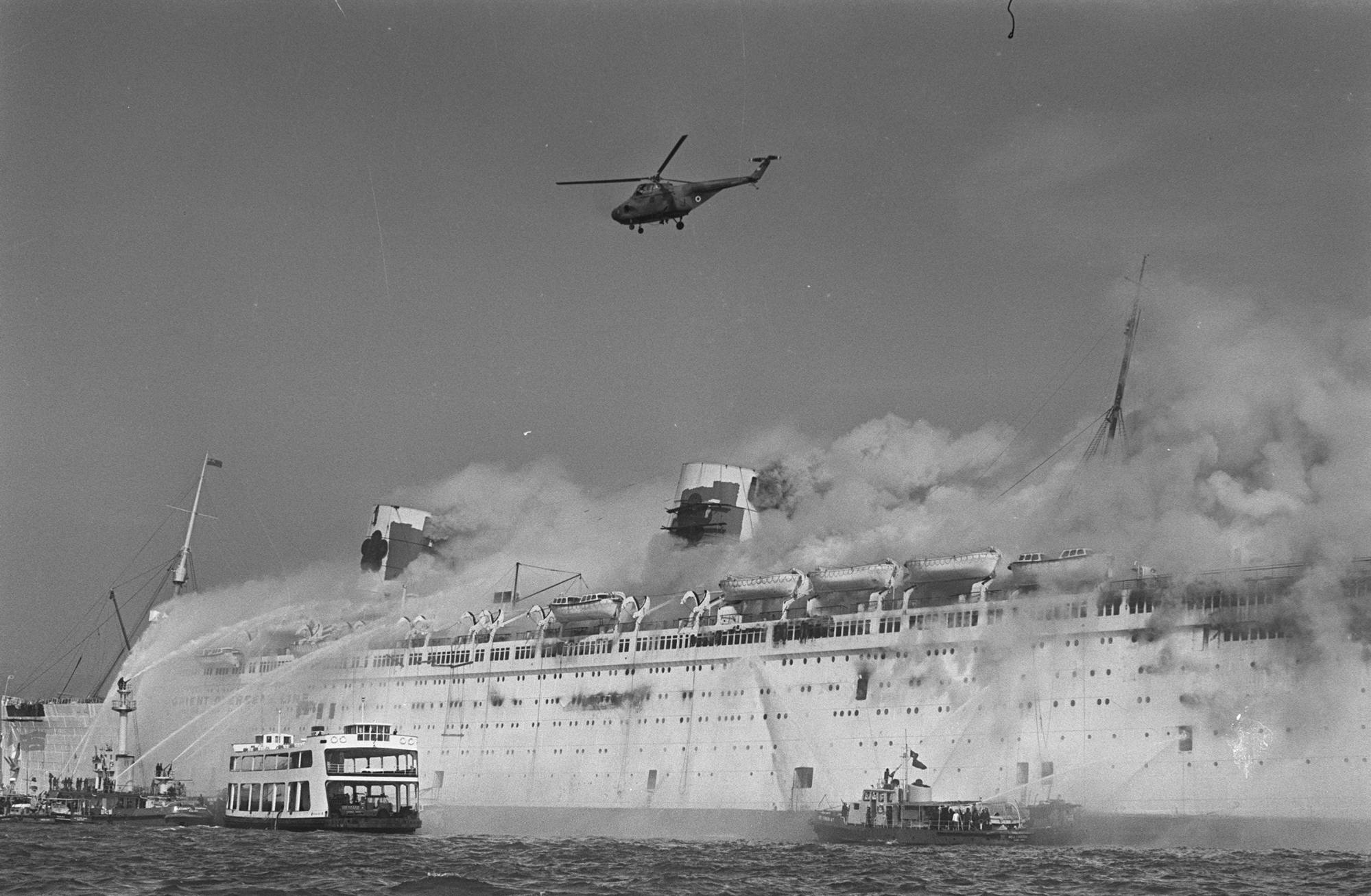
He believed there were about 700 to 800 people on board the ship at the time of the fire as some of the workers had left earlier for their lunch.
An engineer, who only identified himself as Mr Lau said at the time of the fire, the chief engineer organised a firefighting team, but failed to bring the fire under control with extinguishers.
“After battling for a short while, we thought it was useless and left the ship,” he said.
I saw people jumping from the side of the ship into the sea while others were sliding down ropes to boats and lighters waiting below
An engine room technician, Mr Leung Mok, said he was having lunch when he heard of the fire.
“I ran to the deck and slipped down a rope to a nearby lighter. About 10 people were already on the lighter then,” he said.
“I don’t know the cause of the fire nor did I even enquire as everything seemed to be in confusion at the time,” he said.
There were some visitors on board the ship at the time of the fire but they were given first, preference to leave the ship. They all left the blazing vessel by about midday, he said.
“It was originally planned to give the visitors a buffet luncheon on board the ship during lunch time,” he said.
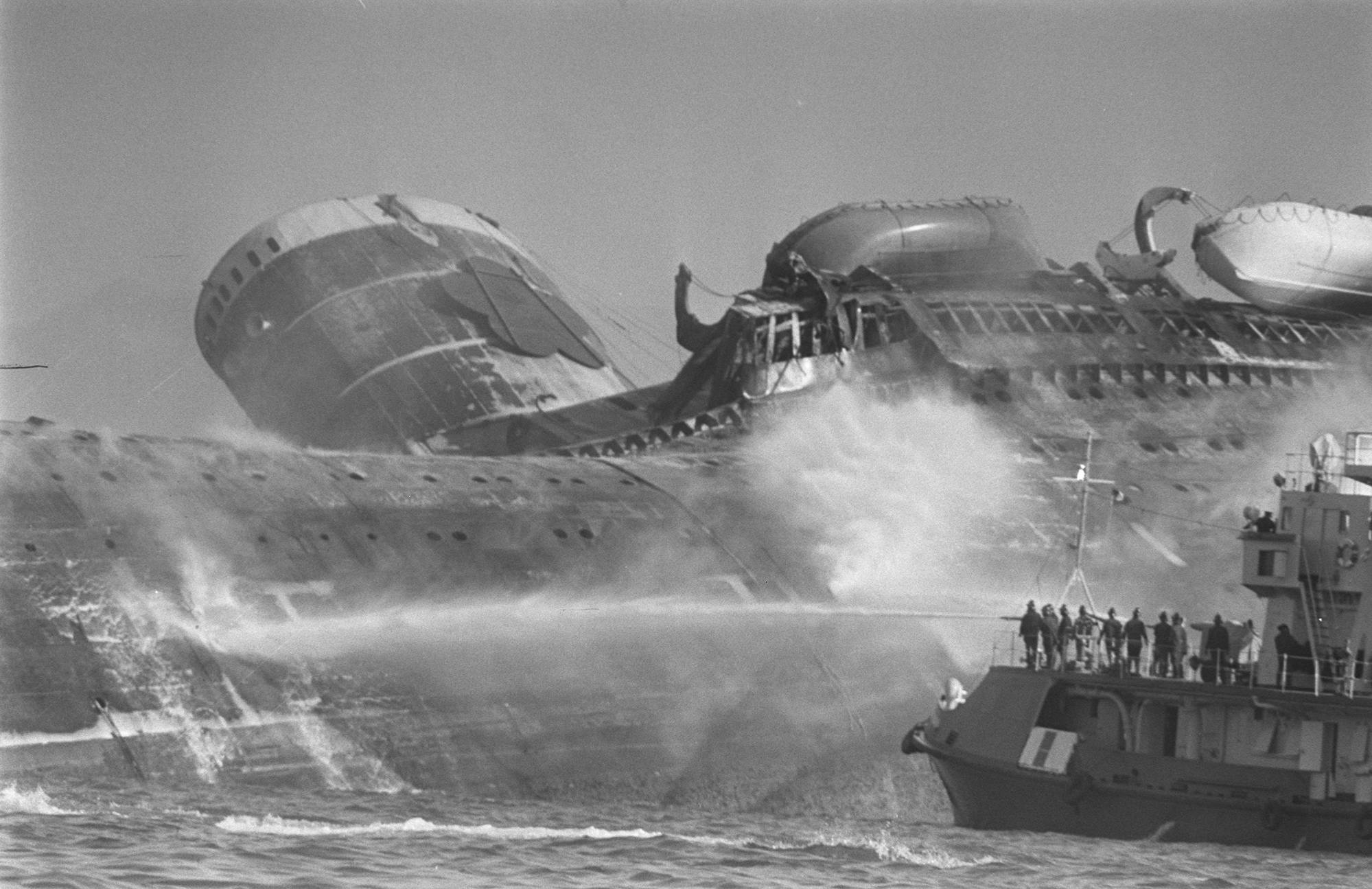
A 25-year-old cook, Mr Chu Wing, said he was working on the galley when he heard about the fire.
“I saw people jumping from the side of the ship into the sea while others were sliding down ropes to boats and lighters waiting below,” Mr Chu said.
He said some of them took off their pants and wrapped their hands before getting down the ropes.
Shortly, after he had left the blazing vessel, he heard a number of explosions, he added.

